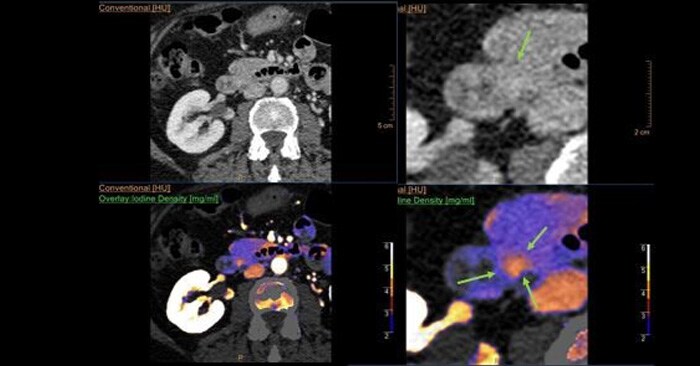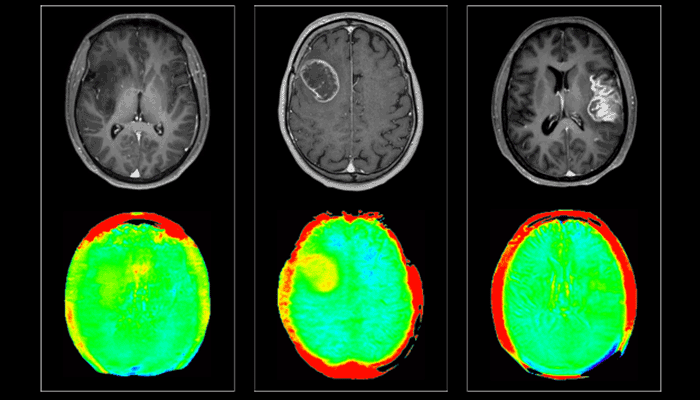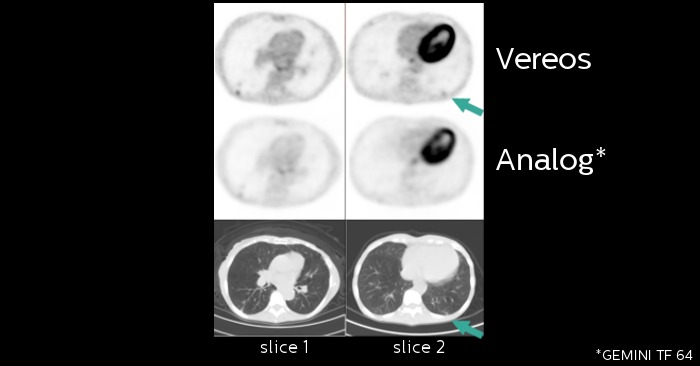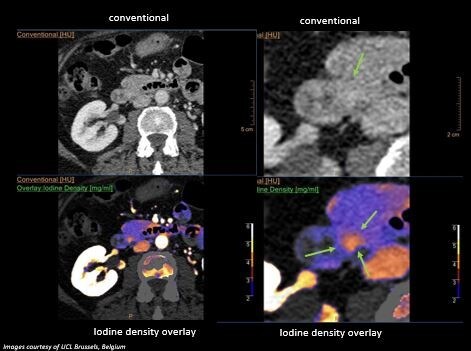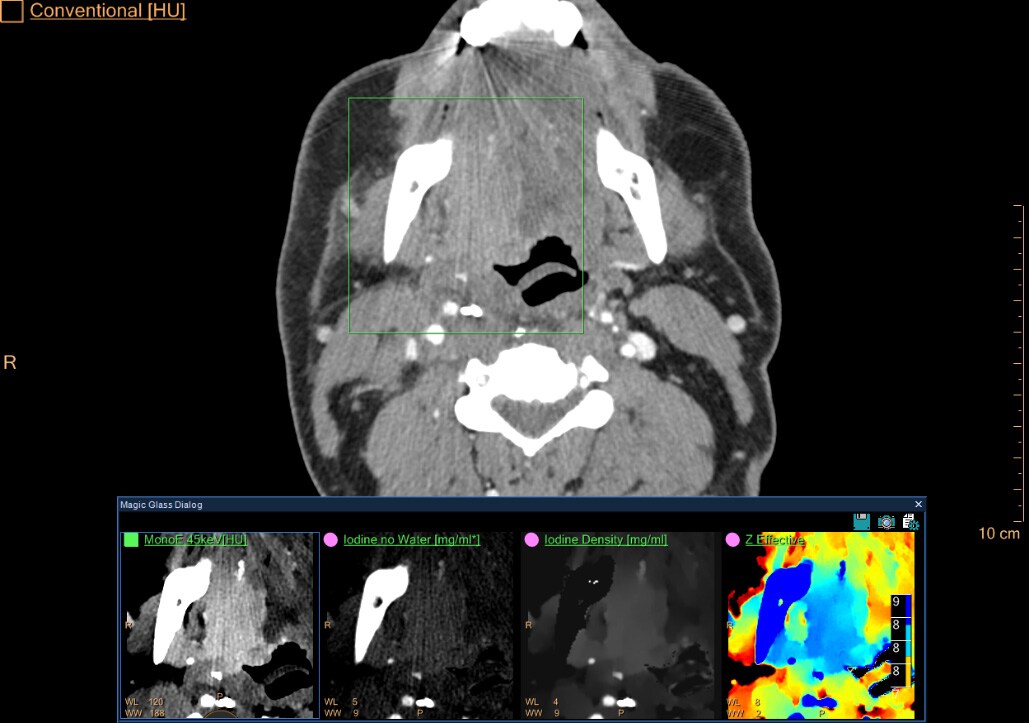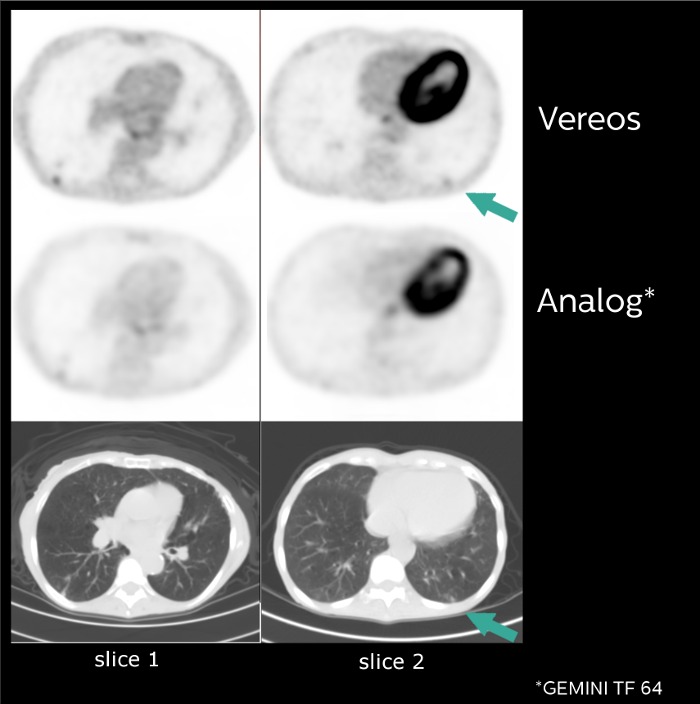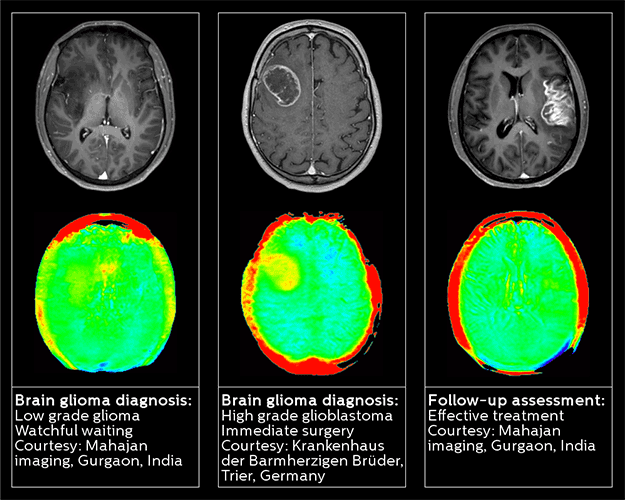I want to learn more
Stay up-to-date and get informed about interesting topics. Or get in touch with our sales department.
Addressing the obstacles to confident diagnosis:
Lesion detection & quantification
Confirming the presence, extent, and size of lesions remains the goal of a large portion of imaging studies. These factors are essential to enabling the patient to receive appropriate treatment in a timely manner. Moreover, in the new world of personalized medicine, lesion quantification is critical to timely decisions about whether to cease or redouble specific treatment options.
The radiologist’s challenge, of course, is to make those determinations in an environment of broad variability. A clear understanding generally involves merging data from multiple imaging modalities with different acquisition parameters and varying levels of image quality. Here are some of the ways we’re making lesion detection and quantification easier.

Spectral CT for hard-to-diagnose lesions
The dilemma of when to perform spectral scans
With conventional CT, the decision of whether to perform a spectral scan can be a difficult judgment call for the radiologist. If an initial conventional scan reveals an issue, but not the root cause, additional testing may be necessary. IQon Spectral CT is the world’s first and only detector-based spectral CT that captures spectral information every time a patient is scanned, without the need for patient pre-selection. IQon delivers diagnostic certainty using multiple layers of spectral data, allowing the first exam to be the right exam. Lesions can be seen that were not identified through conventional CT. Multiple layers of spectral data, and retrospective review and analysis of scans allow for lesion identification upon the first attempt, enabling quicker treatment, while reducing cost and maintaining workflow
The dilemma of when to perform spectral scans
With conventional CT, the decision of whether to perform a spectral scan can be a difficult judgment call for the radiologist. If an initial conventional scan reveals an issue, but not the root cause, additional testing may be necessary. IQon Spectral CT is the world’s first and only detector-based spectral CT that captures spectral information every time a patient is scanned, without the need for patient pre-selection. IQon delivers diagnostic certainty using multiple layers of spectral data, allowing the first exam to be the right exam. Lesions can be seen that were not identified through conventional CT. Multiple layers of spectral data, and retrospective review and analysis of scans allow for lesion identification upon the first attempt, enabling quicker treatment, while reducing cost and maintaining workflow
Identifying head and neck lesions
The ability to identify lesions in the neck can be difficult at times due to their location or artifacts from metal and bone. The IQon Spectral CT allows the use of multiple spectral results that can help enhance lesion visualization. IQon delivers diagnostic certainty using multiple layers of spectral data, allowing the first exam to be the right exam. In this case, a middle-aged female undergoing treatment for head and neck cancer received a follow-up scan on the IQon Spectral CT. A lesion at the base of the tongue on the right side was difficult to detect using conventional CT images only. MonoE 50 keV spectral results allowed the clinician to visualize the lesion boundaries, differentiating it from the surrounding tissue. Additional spectral results such as Z Effective, coupled with the Spectral Magic Glass feature, enabled additional layers of spectral information as well as simultaneous viewing and quick comparison of up to five different spectral results for a region of interest.
Improved detectability & characterization of small lesions1 with digital PET
Visualization of small lesions
Visualization of small lesions is essential for clinicians to diagnose, stage and monitor therapy in oncology patients2. Unmet needs in molecular imaging include detection of small lesions, low dose and fast scans, and clear separation of responders vs. non-responders to therapy.
Philips Vereos digital PET/CT improves detectability and characterization of small lesions relative to the same patient acquired on analog PET/CT. As the first and only true digital PET/CT system offering, Vereos Digital PET/CT is clinically proven to reveal small lesions, enabling a path to improved diagnosis, staging and treatment monitoring.
In this case, Vereos reveals a lung lesion that was not visualized on the Gemini TF analog system. The improved detectability of small lung lesions with Vereos digital PET/CT could have a significant impact on the staging of the patient, affecting the patient management pathway and determining timely response to treatment.
1 Nguyen NC, Image Quality and Diagnostic Performance of a Digital PET Prototype in Patients with Oncologic Diseases: Initial Experience and Comparison with Analog PET, J Nucl Med 2015; 56:1378–1385.
2 Hussain T, Nguyen QT. Molecular Imaging for Cancer Diagnosis and Surgery. Advanced drug delivery reviews. 2014;66:90-100.
Sample images acquired in a clinical study of the Vereos PET/CT system at The Ohio State University. Investigational device limited by law to investigational use.
By using Philips 3D APT, radiologists can now make a confident diagnosis and more confidently assess the pathway and urgency of a patient’s treatment plan.
Enhanced diagnostic confidence in Neuro-oncology Establishing the diagnosis of a brain tumor is not always straightforward. MRI is the gold standard but not reliable enough for tumor follow up.1 The presence of contrast enhancement can confuse the diagnosis of malignant brain tumors, and therefore differentiating low- from high-grade gliomas can prove to be a challenge for radiologists. With three out of five radiologists finding brain tumor diagnosis “challenging” to “very challenging,” it’s evident that this is an area of unmet need; there is also a vital demand for methods that can detect response to therapy at early follow-up times.2 Philips 3D APT (Amide Proton Transfer) is a unique, contrast-free, brain MR imaging method, designed to help radiologists differentiate between low-grade and high-grade gliomas. This technology works by using the presence of endogenous cellular proteins to produce an MR signal that directly correlates with cell proliferation, a marker of tumor activity. 1 Neurology. 2002 Sep 24;59(6):947-9. 2 Cancer Manag Res. 2014; 6: 149–170.
Learn how Philips solutions help radiologists overcome obstacles to confident diagnosis. See them all:




